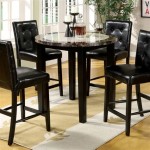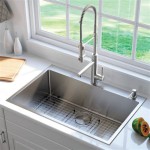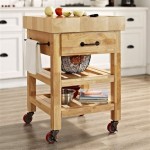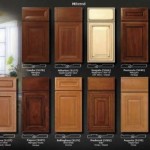Selecting the Right Kitchen Bin for Food Waste Management
Food waste is a pervasive issue with significant environmental and economic consequences. Effective management of food scraps within the kitchen is a crucial first step in mitigating these problems. A dedicated kitchen bin for food waste provides a practical solution for separating organic materials from general refuse, facilitating composting, anaerobic digestion, or other waste treatment processes. Choosing the right bin requires careful consideration of several factors, including capacity, material, design, and functionality. This article explores the key aspects of selecting a kitchen bin specifically designed for food waste collection.
Capacity and Size Considerations
The ideal size of a kitchen food waste bin depends primarily on the number of individuals in the household, the frequency of food preparation, and the local waste collection schedule. Larger households generating substantial volumes of food scraps may require a bin with a capacity of five liters or more. Smaller households or individuals who generate less waste could opt for a smaller bin, such as one with a two or three-liter capacity. Overfilling a bin can lead to unpleasant odors and potential hygiene issues, while an excessively large bin might not be filled frequently enough, potentially attracting pests and insects. Consider the available counter space or under-sink storage space when determining the maximum acceptable bin size.
Furthermore, the frequency of emptying the bin influences the required capacity. If food waste collection occurs weekly, a larger bin might be suitable. However, if the waste is collected more frequently, a smaller bin could suffice. In areas where home composting is practiced, the bin may simply serve as a temporary holding receptacle before transfer to the compost heap. In such cases, a smaller, easily portable bin is generally preferred. Choosing the right capacity minimizes the risk of overflowing, prevents the build-up of foul odors, and ensures efficient use of space.
Many modern food waste bins are designed with compact footprints to maximize space efficiency. Some manufacturers offer slimline bins that can be placed in narrow spaces or hung on cabinet doors. Prior to purchasing a bin, carefully measure the intended location to ensure a proper fit. Consider the height of the bin as well, particularly if it will be placed under a sink or in a cupboard. Ensuring adequate clearance allows for easy access and prevents obstruction of other items stored in the same area.
Material and Durability
The material of a food waste bin significantly impacts its durability, ease of cleaning, and overall hygiene. Common materials include plastic, stainless steel, and ceramic. Each material possesses distinct advantages and disadvantages. Plastic bins are generally lightweight, affordable, and readily available in various colors and designs. However, some plastics may be prone to scratching, staining, or absorbing odors over time. Look for bins made from durable, food-grade plastic that is resistant to cracking and warping. Consider also whether the plastic is recyclable, aligning with broader sustainability efforts. High-density polyethylene (HDPE) and polypropylene (PP) are common plastic materials used in food waste bins due to their durability and resistance to chemical degradation.
Stainless steel bins offer superior durability and a sleek, modern aesthetic. Stainless steel is naturally resistant to corrosion and does not absorb odors. This makes it a hygienic choice for storing food waste. However, stainless steel bins tend to be more expensive than plastic bins. Ensure that the bin is made from high-quality stainless steel to prevent rusting or tarnishing over time. Some stainless steel bins may also be prone to displaying fingerprints, requiring more frequent cleaning to maintain their appearance.
Ceramic bins can add a touch of elegance to the kitchen and are often more aesthetically pleasing than plastic or stainless steel options. Ceramic is non-porous and therefore resistant to odors and stains. However, ceramic bins are typically heavier and more fragile than plastic or stainless steel bins, making them more susceptible to breakage if dropped. Ceramic bins also tend to be more expensive. When selecting a ceramic bin, ensure it is glazed with a food-safe coating to prevent leaching of harmful substances.
Consider the durability of the bin's lid as well. The lid should fit securely and prevent odors from escaping. Hinges, if present, should be robust and resistant to wear and tear. Regardless of the material chosen, regular cleaning with soap and water is essential to maintain hygiene and prevent the build-up of bacteria.
Features and Functionality for Odor Control and Convenience
Effective odor control is a critical feature of any food waste bin. Several design elements contribute to minimizing unpleasant smells. Tight-fitting lids are essential for preventing odors from escaping into the kitchen. Some bins feature lids with rubber seals to create an airtight closure. Activated carbon filters, often incorporated into the lid, can further absorb and neutralize odors. These filters typically require periodic replacement to maintain their effectiveness. The frequency of filter replacement depends on the type of filter and the volume and type of food waste stored in the bin.
Another important feature is proper ventilation. Some bins have ventilation holes to allow air to circulate, reducing moisture build-up and slowing down the decomposition process. However, these ventilation holes should be carefully designed to prevent insects from entering the bin. Balancing ventilation with odor control is a key consideration in bin design.
The use of compostable liners further enhances hygiene and simplifies the emptying process. These liners are made from biodegradable materials, such as corn starch or plant fibers, and can be directly composted along with the food waste. This eliminates the need to wash the bin after each emptying, saving time and reducing water consumption. Ensure that the liners are certified compostable to ensure they break down effectively in composting environments. Different bin sizes require different liner sizes, so it's important to choose liners that are compatible with the bin.
Bins with handles or integrated carrying grips make it easier to transport the food waste to the compost heap or collection point. These features are particularly useful for bins with larger capacities. Foot pedals or touchless sensors allow for hands-free operation, minimizing contact with the bin and promoting hygiene. These features are especially beneficial during food preparation when hands may be dirty or contaminated.
Consider also the ease of cleaning the bin. Bins with smooth, non-porous surfaces are easier to clean than those with textured or rough surfaces. Some bins are dishwasher safe, further simplifying the cleaning process. Regular cleaning with soap and water is essential to prevent the build-up of bacteria and odors.
Maintaining Hygiene and Preventing Pests
Regardless of the type of kitchen bin chosen, maintaining proper hygiene is vital for preventing the proliferation of bacteria and attracting pests. Regularly cleaning the bin with hot, soapy water is essential. After washing, ensure the bin is completely dry before placing a new liner. Avoid using harsh chemicals or abrasive cleaners, as these can damage the bin's surface. Consider using a disinfectant spray to further sanitize the bin after cleaning.
To minimize odors, empty the bin frequently, ideally every few days or as needed. Store the bin in a cool, dry place away from direct sunlight. Avoid placing meat, fish, or dairy products directly into the bin, as these items tend to decompose more quickly and generate more odors. Wrapping these items in newspaper or a compostable bag can help to contain the odors and prevent contamination of the bin.
To deter pests, ensure that the bin lid is tightly sealed. Regularly inspect the bin for any signs of insects or rodents. If pests are present, take appropriate measures to eliminate them. Consider using a natural pest repellent, such as essential oils, around the bin. Maintaining a clean and tidy kitchen environment is also crucial for preventing pest infestations.
Proper ventilation can also discourage pests by reducing moisture and preventing the build-up of stagnant air. However, ensure that the ventilation system is designed to prevent insects from entering the bin. Consider using a mesh screen to cover ventilation holes.
By implementing these hygiene practices, you can ensure that your kitchen food waste bin remains a clean and effective tool for managing organic waste.
Integration with Composting Systems
For households engaged in home composting, the kitchen food waste bin serves as an integral link in the waste management chain. The bin collects food scraps generated during meal preparation and consumption, which are then transferred to the compost heap or vermicomposting system. Selecting a bin that is compatible with the chosen composting method is essential.
For traditional composting, a well-ventilated bin can help to reduce moisture build-up and promote aerobic decomposition. Consider using compostable liners to simplify the transfer of waste to the compost heap. Avoid composting materials that are not suitable for composting, such as meat, fish, dairy products, and oily foods. These materials can attract pests and create unpleasant odors in the compost heap.
For vermicomposting, a specialized bin with a tight-fitting lid is recommended to prevent worms from escaping. Ensure that the bin is made from a material that is safe for worms, such as food-grade plastic. Consider using a bedding material, such as shredded newspaper or coconut coir, to provide a habitat for the worms. Avoid adding acidic foods, such as citrus fruits and tomatoes, to the vermicomposting bin, as these can harm the worms.
Regardless of the composting method, regularly monitor the moisture content and temperature of the compost heap. Add water as needed to maintain a consistent moisture level. Turn the compost heap regularly to aerate the materials and promote decomposition. By properly managing the composting process, you can create nutrient-rich compost that can be used to enrich your garden soil.
Integrating the kitchen food waste bin with a composting system helps to reduce the amount of organic waste sent to landfills, conserves natural resources, and creates valuable compost for gardening.

1 Gallons Metal Odor Resistant Indoor Kitchen Composter With Latching Lid Arc Color White

Kitchen Compost Bins We Love In 2025 Reviews By Wirecutter

Nexus Shuttle Food Waste Recycling Bin Pedal Operated Glasdon Inc

Enviro World 1 Lb 2 Gal Composter Kitchen Organic Bin Ewc 251

Sage Bamboo Fiber And Coffee Grounds Compost Bin World Market

Blue Ginkgo Kitchen Compost Bin 2 6l 0 69 Gal Filter Free Odor Tight Countertop Food Waste Pail With Handles Made In Gray

Counter Food Waste Caddy

Kitchen Compost Caddy Bins Liners Indoor

13 Stylish Compost Bins For Your Small Kitchen 2024 The Strategist

Kitchen Caddy Ecovision Environmental








